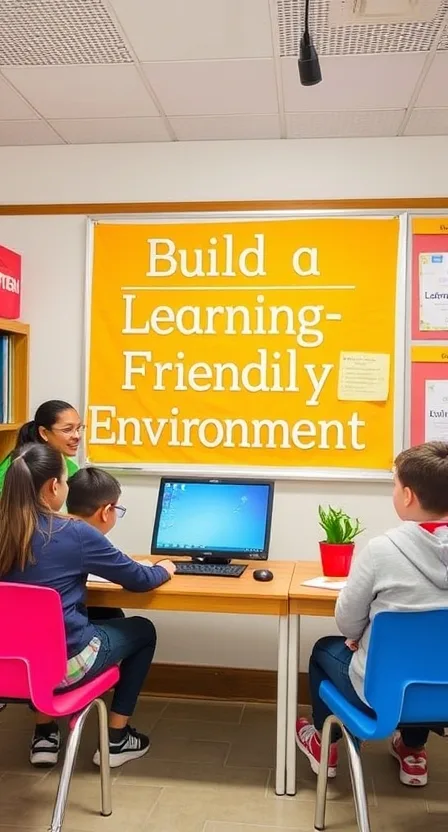Achieving balance between learning and wellness is a challenge many of us face today. With endless demands on our time and attention, finding harmony between personal growth and self-care requires effort and strategy. This post dives deep into 10 actionable tips, offering insights, strategies, and examples to help you integrate learning and wellness seamlessly into your daily routine.
1. Master the Art of Time Management
Time management is the cornerstone of balancing multiple priorities. Here’s how to make the most of your time:
- Set Priorities: Use the Eisenhower Matrix to categorize tasks into urgent, non-urgent, important, and less important.
- Use Time-Blocking: Dedicate specific hours to learning, wellness, and rest. Apps like Google Calendar or Notion can help you plan effectively.
- Practice the Two-Minute Rule: If a task takes less than two minutes, do it immediately to avoid procrastination.
- Avoid Multitasking: Focus on one task at a time to maximize efficiency.
A sample schedule might look like this:
- Morning: 30 minutes of yoga and 1 hour of reading or online learning.
- Afternoon: Work commitments with a short mindfulness break.
- Evening: Reflection and journaling.
Time management ensures that both your learning goals and wellness routines receive adequate attention.

2. Embrace the Concept of Lifelong Learning
Lifelong learning is not just about career advancement; it’s about staying curious and evolving. Here’s how to cultivate a mindset of constant growth:
- Enroll in Courses: Platforms like Coursera, Udemy, or Khan Academy offer courses on diverse topics.
- Develop Microlearning Habits: Spend 15–20 minutes daily on bite-sized learning, such as reading articles or listening to podcasts.
- Learn a New Skill: Take up hobbies like painting, coding, or playing a musical instrument to stimulate creativity.
Examples:
- A professional might learn data analytics to enhance their career.
- A parent might explore child psychology to better understand their kids.
Lifelong learning enriches both your personal and professional life.

3. Prioritize Mental Health and Emotional Resilience
Your mental health is the foundation of everything else. Without emotional stability, both learning and wellness suffer. Strategies to enhance mental health include:
- Meditation and Mindfulness: Spend 10–15 minutes daily in meditation using apps like Headspace.
- Gratitude Journaling: Reflect on three things you’re grateful for each day to foster positivity.
- Therapy and Support Groups: Seek professional help when needed to manage stress or anxiety.
Example:
A student preparing for exams can manage stress better by practicing mindfulness and taking short breaks to recharge.

4. Make Physical Fitness a Priority
Physical activity doesn’t just improve your body—it sharpens your mind. Incorporate these into your routine:
- Daily Workouts: Aim for at least 30 minutes of exercise. Activities like swimming, jogging, or strength training are excellent.
- Active Breaks: Take a 5-minute stretch or walk after every hour of work or study.
- Combine Fitness with Fun: Try dance classes, hiking, or cycling with friends to make exercise enjoyable.
Physical fitness boosts energy levels, enhances focus, and reduces stress, making it a vital part of a balanced life.

5. Eat for Your Brain and Body
Nutrition is often overlooked, but it plays a critical role in learning and wellness. Follow these guidelines:
- Eat Brain Foods: Incorporate walnuts, blueberries, fish, and leafy greens.
- Stay Hydrated: Drink at least 2 liters of water daily to improve focus.
- Avoid Processed Foods: Limit sugary snacks and opt for whole, nutrient-rich alternatives.
Example:
- Breakfast: Oatmeal with nuts and berries.
- Lunch: Grilled chicken salad.
- Snacks: Greek yogurt or mixed nuts.
Good nutrition is a simple yet powerful way to enhance your learning capacity and overall health.

6. Build a Learning-Friendly Environment
Your surroundings significantly impact your productivity. Here’s how to optimize your environment:
- Declutter Your Space: Keep your desk organized and free of distractions.
- Use Ergonomic Furniture: Invest in a comfortable chair and desk setup to avoid strain.
- Incorporate Natural Light: Bright, natural lighting improves focus and mood.
Example:
A study nook with a clean desk, a comfortable chair, and motivational posters can make learning enjoyable.

7. Balance Work and Life
Maintaining work-life balance ensures you don’t burn out. Strategies include:
- Set Boundaries: Avoid checking work emails during personal time.
- Schedule Downtime: Plan time for hobbies, relaxation, or family outings.
- Practice Saying No: Don’t overcommit to tasks that interfere with your well-being.
Work-life balance is essential for sustained productivity and happiness.

8. Disconnect to Reconnect
Technology can be both a boon and a bane. To maintain focus:
- Limit Screen Time: Set daily limits on social media and unnecessary browsing.
- Use Digital Well-Being Tools: Apps like Focus Mode or StayFree can help track and reduce screen usage.
- Engage in Offline Activities: Spend time outdoors, read a physical book, or enjoy hobbies like gardening.
Example:
Spending a weekend hike without your phone can rejuvenate your mind and body.

9. Cultivate Supportive Relationships
Surrounding yourself with the right people can make a big difference.
- Join Communities: Be part of groups that share your learning or wellness interests.
- Seek Mentorship: Learn from those who inspire you.
- Nurture Personal Relationships: Spend quality time with family and friends.
Supportive relationships enhance your motivation and emotional well-being.

10. Reflect and Adjust Regularly
Continuous reflection helps you stay on track. Steps include:
- Review Your Goals Weekly: Assess what’s working and what needs improvement.
- Celebrate Small Wins: Reward yourself for progress, no matter how minor.
- Stay Flexible: Be open to changing routines that no longer serve you.
Example:
At the end of each month, review your learning achievements and wellness habits to refine your approach.

Conclusion
Balancing learning and wellness is a journey that requires consistent effort and mindful choices. By following these 10 tips, you can create a harmonious routine that nurtures both your mind and body. Remember, the key lies in small, sustainable changes that align with your long-term goals.




